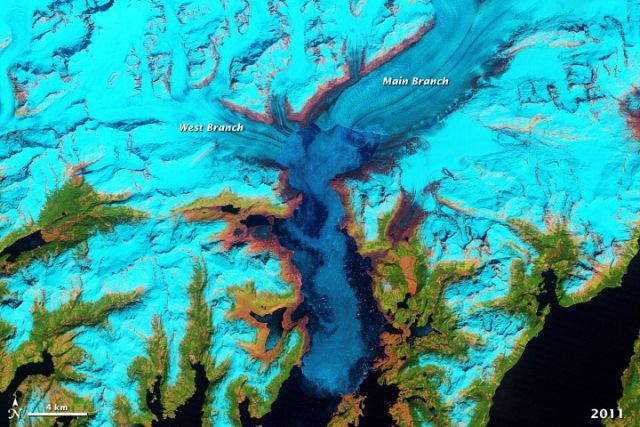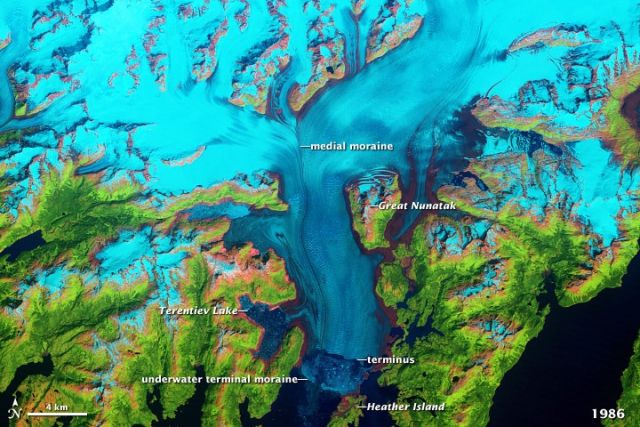 Columbia Glacier, Alaska, in 1986 (top) and 2011 (bottom): NASA
Columbia Glacier, Alaska, in 1986 (top) and 2011 (bottom): NASA
Alaska’s Columbia Glacier is one of the fastest evolving ice rivers on Earth. It flows from its headwaters 10,000 feet up in the Chugach Mountains towards Prince William Sound. In 1980 it began a rapid retreat that continues today. From NASA Earth Observatory:
These two false-color images, both captured by the Thematic Mapper (TM) instrument on Landsat 5, show the glacier and the surrounding landscape in 1986 and 2011. Snow and ice appears bright cyan, vegetation is green, clouds are white or light orange, and the open ocean is dark blue. Exposed bedrock is brown, while rocky debris on the glacier’s surface is gray. The 2011 image has more snow because it was captured in May, while the 1986 image was captured in July… As the glacier has retreated, it has also thinned substantially, as shown by the expansion of brown bedrock areas. Rings of freshly exposed rock, known as trimlines, are prominent in the later image. Since the 1980s, the glacier has lost about half of its total thickness and volume.
The retreat has also changed the flow dynamics of the glacier. The medial moraine—a line of debris deposited when separate channels of ice merge (seen as a line down the center of the 1986 glacier)—divided the Main Branch from West Branch in 1986. Now the retreating terminus has effectively split the Columbia into two glaciers, with calving occurring on both fronts.












